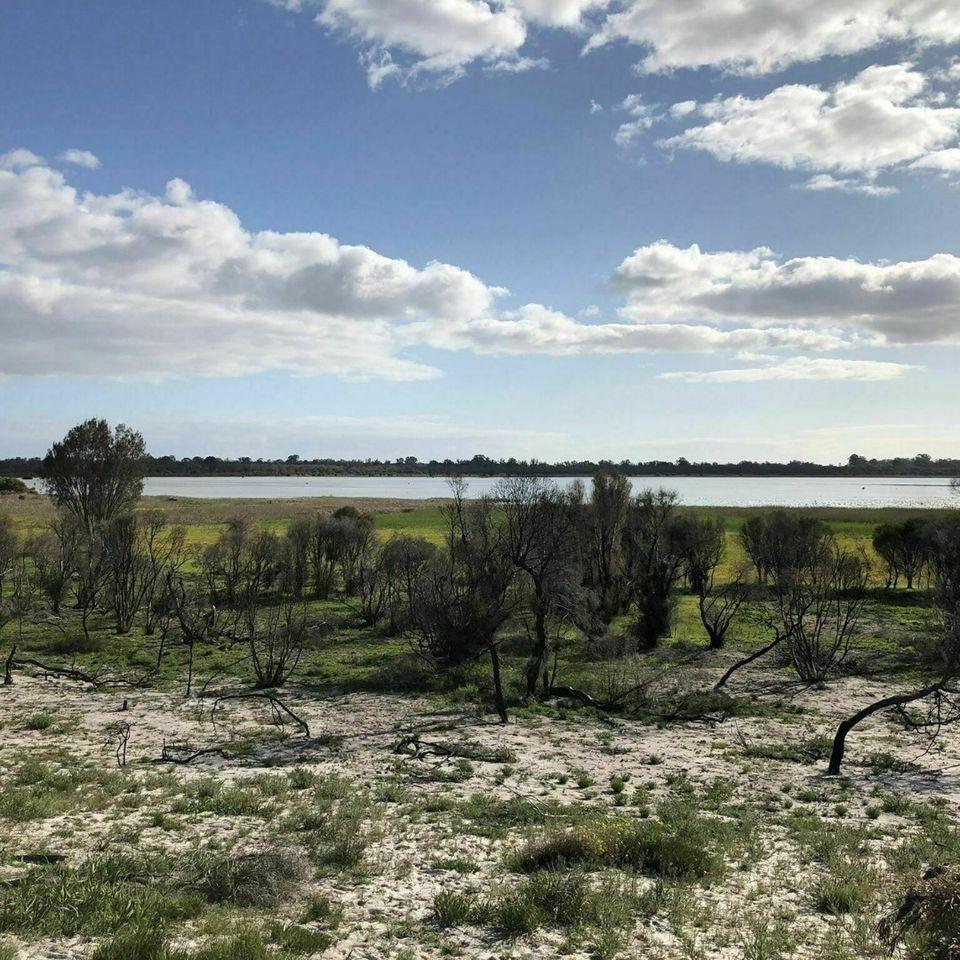Birtwistle Local Studies Library
Lying about 10km west of Armadale is the precious natural reserve of Forrestdale Lake, which until 1973 was known as Lake Jandakot. It is a seasonal lake of approximately 220 hectares, and is an important wetland, being a breeding ground and migration stop over for many waterbirds, as well as supporting a diverse range of flora and fauna. It was a key area for First Nations people, who used to camp on its shores and hunt. The name Jandakot is said to have come from the Aboriginal word for “place of the whistling eagle.”

Forrestdale Lake/Lake Jandakot
The Lake itself usually starts to fill in June or July and reaches its maximum depth by the end of September, with depths typically of 200 -500mm. However, in earlier times it was deeper, and in some years it did not dry up at all, but a drier climate and increased ground water extraction has lowered the average water level.
Forrestdale Lake/Lake Jandakot
European settlement occurred in the area around 1885, and much of the land was cleared and used for agriculture and grazing. Sailing occurred from an early period – there are photos of boats on the lake going back to 1914.

Lake Jandakot 1914
In 1957 the Armadale Rotary Club requested the support of the Armadale – Kelmscott Roads Board to form a sailing club at Lake Jandakot. The Board was in favour, but the idea was opposed by the Department of Fisheries and the WA Museum due to the threat to water birds dependent on the lake. The Rotary Club advised that no power boats would be allowed, only the northern end of the lake would be used, and that the club would provide a valuable community service for the area’s youth.

Waterbird at the Lake
The lake was designated an ‘A’ Class Nature Reserve in 1957 and authority over it was vested in the State’s Fauna Protection Advisory Committee. They concluded that the formation of a sailing club would not be a threat to the local fauna. The Lake Jandakot Sailing Club was duly formed later that same year, with enthusiastic support shown at a public meeting in Armadale, and a portion of the lake was allowed to be leased to the sailing club.
A sailing demonstration was held at the Lake on the 13th October, 1957, with the support of five yacht clubs and 500 members of the public, reportedly a great day of sailing. The official opening day for the club was held shortly after, on the 19th of October.
Lake Jandakot Opening Day
A lot of work was done to make the area suitable for sailing. Club members had to clear away old stumps and rubbish, and a survey of the lake was made to ensure safe navigation. A sluice gate was erected at the outlet end of the lake to try to retain sufficient water over the summer months. In 1958, the Sailing Club managed to acquire the Bedfordale Primary School building to use as its clubhouse, and an access road was constructed so that it could be brought in.

The clubhouse at Lake Jandakot
Sailing took place at various times, but races normally commenced on a Sunday afternoon about 2pm, when the sea breeze often arrived. Popular boats in use were VJs, 14 footers, catamarans and pram dinghies for the youngsters. The Lake Jandakot Sailing Club deliberately started its season before the other metropolitan clubs started their regattas in order to attract those clubs, and generally they gave great support. The 1958 open day had 35 yachts and 600 visitors, including the Honourable John Tonkin, the State Premier. The 1963 open day had 50 boats from seven different classes. The Olympic sailor Rolly Tasker even used the lake to practice for the 1960 Summer Olympics, where he was competing in the Flying Dutchman class.

Open Day, 1958, with the Premier, the Honourable John Tonkin
The club did not last long beyond 1963, and it ceased to exist after two seasons of low water and the destruction of the clubhouse by strong winds, which was finished off by vandals. However, during its years of operating it brought a great deal of pleasure to its members and provided many people the opportunity to experience sailing for the first time.